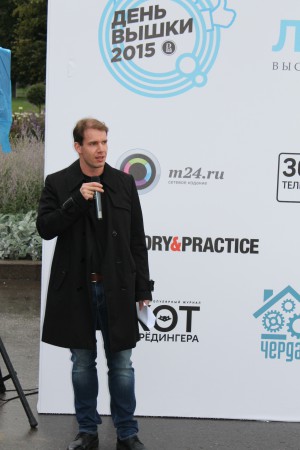(Featured photo: Alexandra Selivanova // Селиванова Александра Владимировна)
This is part II of a talk that I delivered at HSE Open Day 2015 at Moscow’s Gorky Park on Sept 9:
In my last post I gave some anectoal evidence on public sector innovation from the OECD-world. But what is the empirical evidence – what drives innovation in Public Administration? Research has identified some patterns: An innovative local public sector organization has the following internal properties:
(i) it is large, in terms of organizational, staff or population size.
(ii) It features a significant share of highly-educated professionals that can focus on adopting and implementing new ideas without adversely affecting daily working routines.
(iii) An innovative organization’s staff includes externally hired professionals. Managers that have been hired from outside the organization positively affect the supply side of innovation; job mobility is a relevant source of policy entrepreneurs.
(iv) Innovative agencies posses an internal Performance Management system that allows for internal risk sharing techniques and establish a risk-taking culture.
(v) An innovative organization ensures a high level of employee empowerment by offering knowledge and skill training. This empowerment practice increases encouragement on innovative behavior, i.e. “recovering quickly from errors, learning from those discoveries, generating innovative proposal for redesigning processes and products.” (Fernandez and Moldogaziev 2013 JPart).
(vi) Apparently decision makers tend to innovate in “good times”, though we would expect new ideas after things went wrong. Pallesen (2004 Governance) found that relative fiscal leeway and wealth enables communities to take the risk to privatize community assets. The implication is that innovation adoption is “the politics of good times”.
While these items are uncontroversial, the impact of performance gaps and peer effects is not. Therefore is will discuss the role performance and peer effects on innovative behavior a little bit more.
(vii) Innovative organizations do experience performance gaps, i.e. gaps between aspiration levels for salient goal variables and current performance On the one hand poor relative performance has been found to result in problemistic search processes, organizational learning efforts and innovative activity among members both of private and public sector organizations. On the other hand Public Choice theory tells us that organizations with performance shortfalls tend to avoid innovative behavior. They have an incentive to provide a baseline level of performance. But they will not go for the extra-mile. In my own research I found that large cities in Germany that have a high level of public debt tend to avoid performance comparisons, an innovative practice in public management. Researchers from Sweden found that highly indebted Swedish municipalities in Sweden are more likely to stick to performance evaluation. Almost the same variable, but opposite effect.
(Viii) Innovation organizations learn from, strategically interact with and mimic innovative peers. There are good arguments that decision makers have a look at their neighbor before they choose themselves. Has my neighbor adopted the innovation? The mechanism for improvement is competitive learning, that is, policy-transfer because public authorities compete for investments, voters, and taxpayers by performing well on performance scores (yardstick competition approach, Besley and Case 1995 AER). Voters are sensitive to the performance of the incumbent relative to those observed in neighboring jurisdictions; performance indicators act as a yardstick, i.e. a benchmark to inform their voting-decision.
However, the role of peer effects in innovation diffusion has been doubted. Diffusion of innovation might not result from competitive or pure learning but from a search of legitimacy. Some agencies just adopt a policy to gain a reputation premium. But they do not implement it. Public organizations may also adopt an innovation to comply with external regulation or in search of legitimacy but without fully implementing the new routine. There might be mimicry and copycatting, but no improvement of organizational performance.
